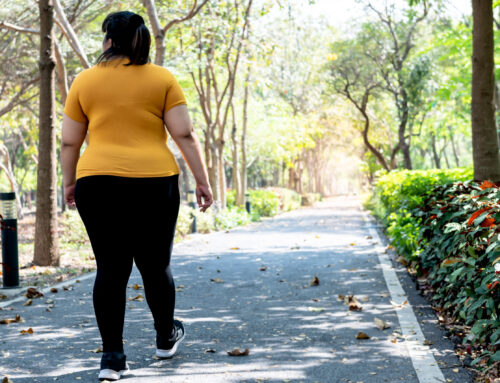Unlocking the Potential Benefits of Guaifenesin for Lipedema
 Lipedema is a chronic inflammatory condition that primarily affects women, causing disproportionate fat accumulation in the lower body. It can be physically and emotionally debilitating, often leading to pain, swelling, and decreased mobility. Currently, there is no cure for lipedema, and treatment options are limited. However, recent research has shown promise in the use of guaifenesin, a common over-the-counter medicine typically used to treat chest congestion. This blog explores the potential benefits of guaifenesin for lipedema, including its mechanism of action, dosage recommendations, and potential side effects.
Lipedema is a chronic inflammatory condition that primarily affects women, causing disproportionate fat accumulation in the lower body. It can be physically and emotionally debilitating, often leading to pain, swelling, and decreased mobility. Currently, there is no cure for lipedema, and treatment options are limited. However, recent research has shown promise in the use of guaifenesin, a common over-the-counter medicine typically used to treat chest congestion. This blog explores the potential benefits of guaifenesin for lipedema, including its mechanism of action, dosage recommendations, and potential side effects.
Guaifenesin is a medication commonly used to treat respiratory conditions such as coughs and congestion. However, recent research has suggested that it may also hold promise for addressing the challenges faced by individuals with lipedema.
One of the Key Potential Benefits of Guaifenesin for Lipedema
Guaifenesin has the ability to help break down and eliminate excess fatty deposits in the body. By promoting the breakdown of adipose tissue, guaifenesin may help reduce the swelling and discomfort associated with lipedema. Additionally, this medication may improve lymphatic flow, allowing for the efficient removal of waste products and reducing the risk of further complications.
Clinical Studies and Evidence Supporting Guaifenesin’s Efficacy in Lipedema Treatment
While the research in this area is still developing, there have been several promising studies that warrant further investigation.
A notable study published in the Journal of Lymphatic Research and Biology found that guaifenesin, when used in combination with a low-carbohydrate diet, showed significant improvements in pain, swelling, and quality of life among participants with lipedema. Another study conducted by researchers at a prominent medical center found that guaifenesin helped reduce adipose tissue and improve lymphatic flow in individuals with lipedema.
While these studies provide initial evidence of guaifenesin’s potential benefits, it is important to note that further research is needed to establish its efficacy as a treatment for lipedema. Controlled clinical trials with larger sample sizes are necessary to confirm these findings and determine the optimal dosages and treatment duration.
How to Incorporate Guaifenesin into your Lipedema Management Plan
 Before starting any new treatment, it is crucial to consult with a qualified healthcare professional, like Dr. Marcia Byrd, who specializes in lipedema. She can provide personalized guidance based on your unique health needs and circumstances.
Before starting any new treatment, it is crucial to consult with a qualified healthcare professional, like Dr. Marcia Byrd, who specializes in lipedema. She can provide personalized guidance based on your unique health needs and circumstances.
Once you have received medical approval, the next step is to determine the appropriate dosage of guaifenesin. The ideal dosage may vary depending on factors such as your weight, severity of lipedema, and other individual considerations. Dr. Byrd will develop a treatment plan that includes the specific dosage and frequency of guaifenesin administration.
In addition to guaifenesin, lifestyle modifications play a vital role in managing lipedema. It is essential to follow a healthy, well-balanced diet that includes nutrient-dense foods and limits the intake of processed and high-sugar foods. Regular exercise, such as low-impact activities like walking or swimming, can also support lymphatic flow and aid in managing lipedema symptoms.
Moreover, maintaining a healthy body weight is crucial for managing lipedema effectively. Weight loss may be recommended for individuals who are overweight or obese, as excess weight can exacerbate lipedema symptoms. Combining guaifenesin with lifestyle modifications such as diet and exercise can maximize its effectiveness and provide optimal symptom relief.




